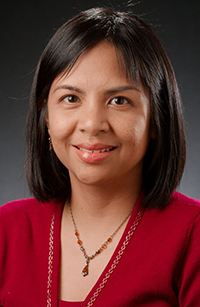Cheryll C. Thomas, MSPH
Deputy Associate Director for Science, Office of the Director

Please give a short description of your branch or office and describe your work there.
The Division of Cancer Prevention and Control’s Associate Director for Science (ADS) Office works to maintain scientific integrity in our public health science activities. The DCPC ADS Office is responsible for a number of science administration duties for the Division, including matters related to human subjects and clearance of all scientific publications and informational materials.
Briefly describe some of your recent work. Why is this focus or topic interesting to you?
In the midst of reviewing scientific publications and informational materials, I have been able to collaborate with our Division scientists on work that has focused on using United States Cancer Statistics data. These data speak to the adage ‘strength in numbers’. With more than a million new cases of cancer reported in the United States a year, there is a wealth of data to analyze.
Why did you choose to go into public health?
I worked in a cardiovascular research lab while I was in college and after I graduated. Most of our work was at the cellular level, but we started a few studies that combined the cellular- and individual-level data. Our lead wanted some expertise on how to analyze these data beyond our consultations with our School of Public Health colleagues. A few of us applied to schools of public health with the intention of going back to the lab after our coursework and masters’ degrees. Little did I know how much I would enjoy the public health philosophy of helping one population at a time. I haven’t looked back, and that was 20 years ago.
What are some goals or hopes you have for your work in the future?
We do some wonderful programmatic and scientific work in our Division, and I would like to see us share that information in a clear and concise way without compromising the science or programmatic efforts behind it. Yet this is challenging since it means understanding our audiences so that we can explain a work in a way that makes sense.
- Page last reviewed: May 7, 2018
- Page last updated: May 7, 2018
- Content source:
- Maintained By:


 ShareCompartir
ShareCompartir